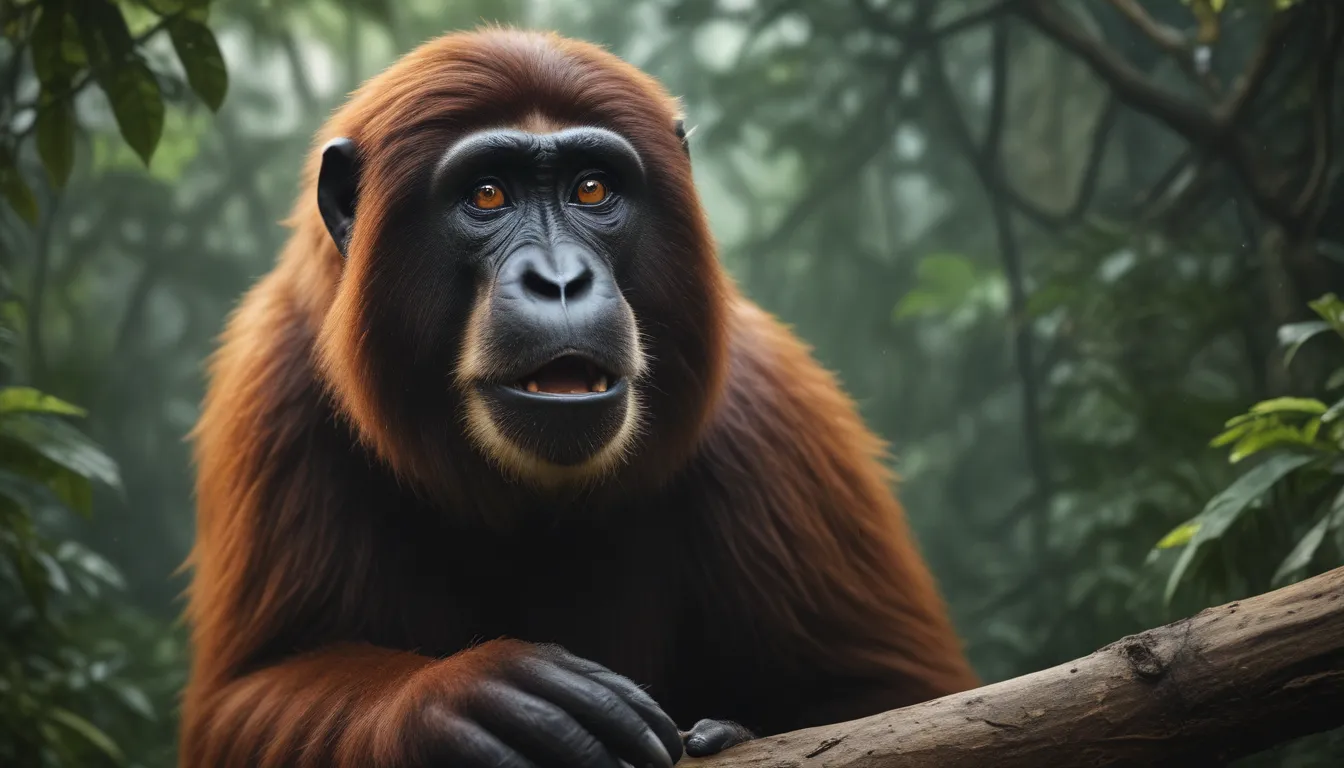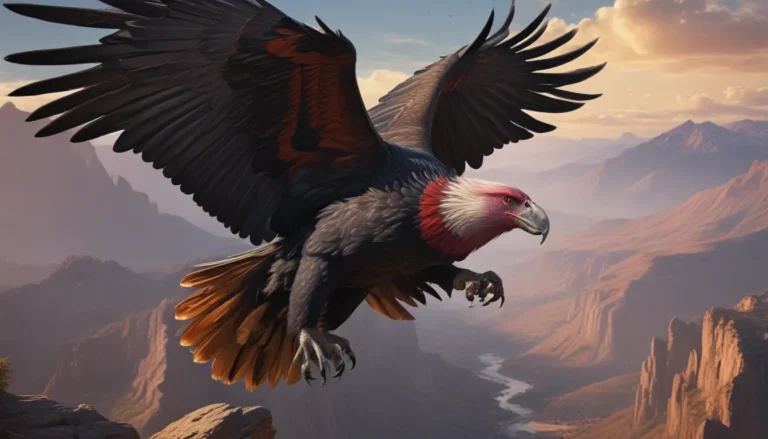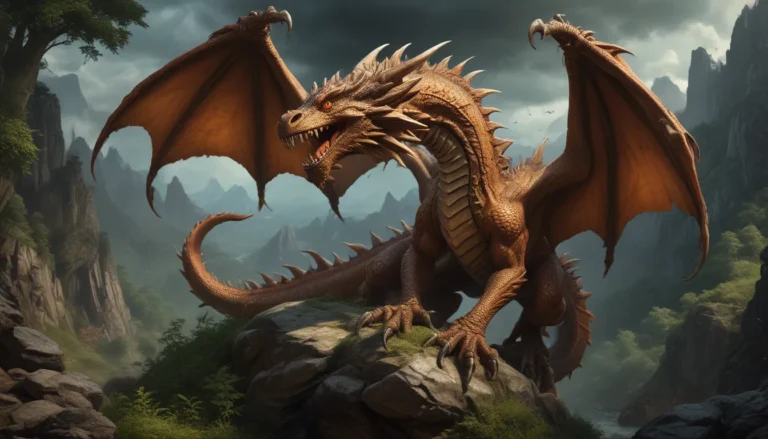The pictures we use in our articles might not show exactly what the words say. We choose these pictures to make you interested in reading more. The pictures work together with the words but don’t take their place. The words still tell you the important facts.
Welcome to a journey into the captivating world of the howler monkey, a fascinating creature that roams the forests of Central and South America. Known for their powerful vocalizations that can be heard for miles, howler monkeys are not just loud; they are also vital components of the ecosystem, playing a crucial role as seed dispersers. Let's delve into 19 intriguing facts about these enigmatic primates that will leave you in awe of their unique abilities and characteristics.
Unveiling the World of Howler Monkeys
The Loudest Creatures in the New World
- Howler monkeys hold the title for being the loudest animals in the New World, with their howls traveling up to three miles.
- Their distinctive vocalizations serve as territorial calls and means of communication within their social groups.
Remarkable Vocal Adaptations
- Howler monkeys possess enlarged hyoid bones in their throats, which resonate and amplify their calls, allowing them to produce such loud vocalizations.
Diverse Species
- There are nine recognized species of howler monkeys, each with its own distinct characteristics such as fur color and habitat preferences.
Arboreal Lifestyle
- Howler monkeys are arboreal creatures, spending most of their lives in trees and using their long limbs and prehensile tails to navigate the forest canopy with ease.
Exploring Howler Monkey Behaviors
Unique Diet
- These primates are mostly folivorous, feeding mainly on leaves. Their digestive systems have adapted to efficiently process and extract nutrients from this type of food.
Sociable Troops
- Howler monkeys live in large social groups known as troops, led by a dominant male and consisting of females, young offspring, and subordinate males.
Dominance Hierarchy
- The social structure of howler monkeys revolves around a dominance hierarchy, with the alpha male maintaining order and getting priority access to resources and mates.
Sedentary Lifestyle
- While they move within their territory, howler monkeys are generally sedentary creatures, finding everything they need within their home range.
Delving Deeper into Howler Monkey Adaptations
Scent Marking and Communication
- Howler monkeys use scent marking as a form of communication, leaving scent trails on trees with specialized scent glands on their chests.
Seed Dispersal Role
- Due to their folivorous diet, howler monkeys play a crucial role in seed dispersal by ingesting seeds and later dispersing them in their droppings.
Importance of Conservation
- Several species of howler monkeys are endangered due to habitat loss and illegal hunting, highlighting the need for conservation efforts to protect these valuable creatures.
A Glimpse into Howler Monkey Life
Lifespan and Predators
- Howler monkeys can live for about 20 to 25 years in the wild, with some individuals surpassing 30 years. They have few natural predators but are threatened by jaguars, birds of prey, and snakes.
Legal Protection
- Howler monkeys are protected by laws in many countries, making it illegal to harm or capture them to preserve their populations and habitats.
Colorful Faces
- Male howler monkeys have colorful faces, displaying hues of red, orange, and black that aid in visual communication within their social groups.
Embracing the Diversity of Nature
As we marvel at the incredible world of howler monkeys, it's essential to remember the broader scope of the animal kingdom. There's a vast array of behaviors, adaptations, and interconnections waiting to be explored. From the mysteries of animal vocalizations to the technological advances in studying animal communication, there's a wealth of knowledge to uncover. Let's also emphasize the importance of conservation efforts to safeguard these amazing species for generations to come.
Conclusion: The Legacy of Howler Monkeys
Howler monkeys are not just loud animals in the forest; they are essential players in the delicate balance of nature. Their unique traits, behaviors, and roles in the ecosystem underscore the importance of understanding and preserving these remarkable creatures. By raising awareness, supporting conservation initiatives, and continuing to study and appreciate the diversity of our natural world, we can ensure a future where howler monkeys and other species thrive in their environments.
FAQs: Exploring More About Howler Monkeys
- How loud are howler monkeys?
-
Howler monkeys can produce vocalizations reaching volumes of up to 140 decibels, making them one of the loudest land animals.
-
What do howler monkeys eat?
-
Howler monkeys are primarily folivores, but they also consume fruits, flowers, and occasional insects as part of their diet.
-
Are howler monkeys dangerous to humans?
-
Generally, howler monkeys are not considered dangerous to humans, but caution and respect should be maintained when observing them in the wild.
-
Do howler monkeys live in groups?
-
Yes, howler monkeys typically live in social groups called troops, varying in size depending on the species and habitat.
-
Where can howler monkeys be found?
- Howler monkeys are native to Central and South America, inhabiting diverse habitats across countries like Costa Rica, Brazil, and Mexico.
Stay Curious and Connected to Nature
Let's continue to explore the wonders of the natural world, from the depths of the rainforest to the vastness of the oceans. Each discovery and understanding of animal behaviors and adaptations brings us closer to appreciating the diversity and interconnectedness of all living beings. As we journey through the fascinating realm of howler monkeys and beyond, let's nurture our curiosity and commitment to preserving the beauty and complexity of our planet.






